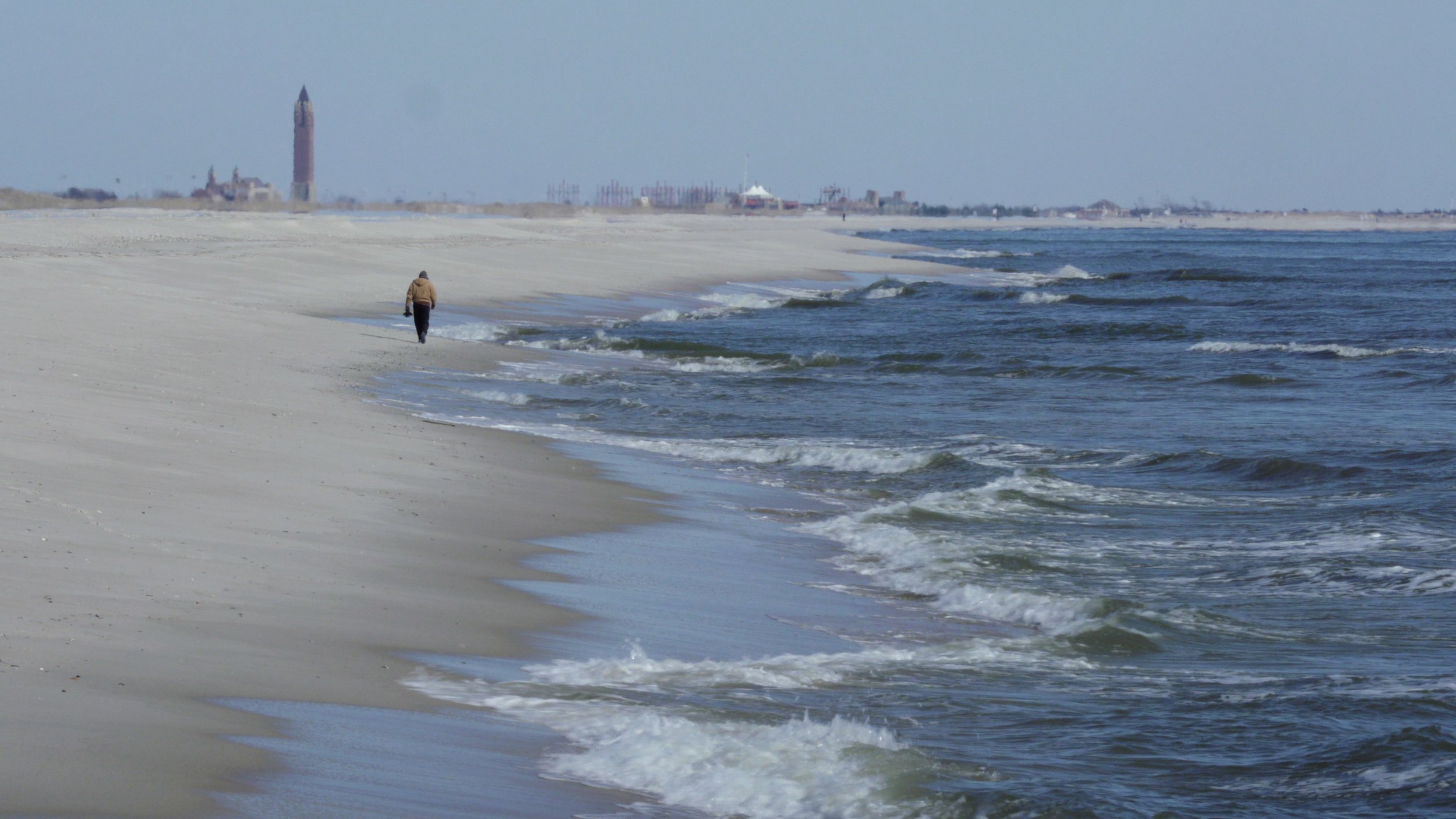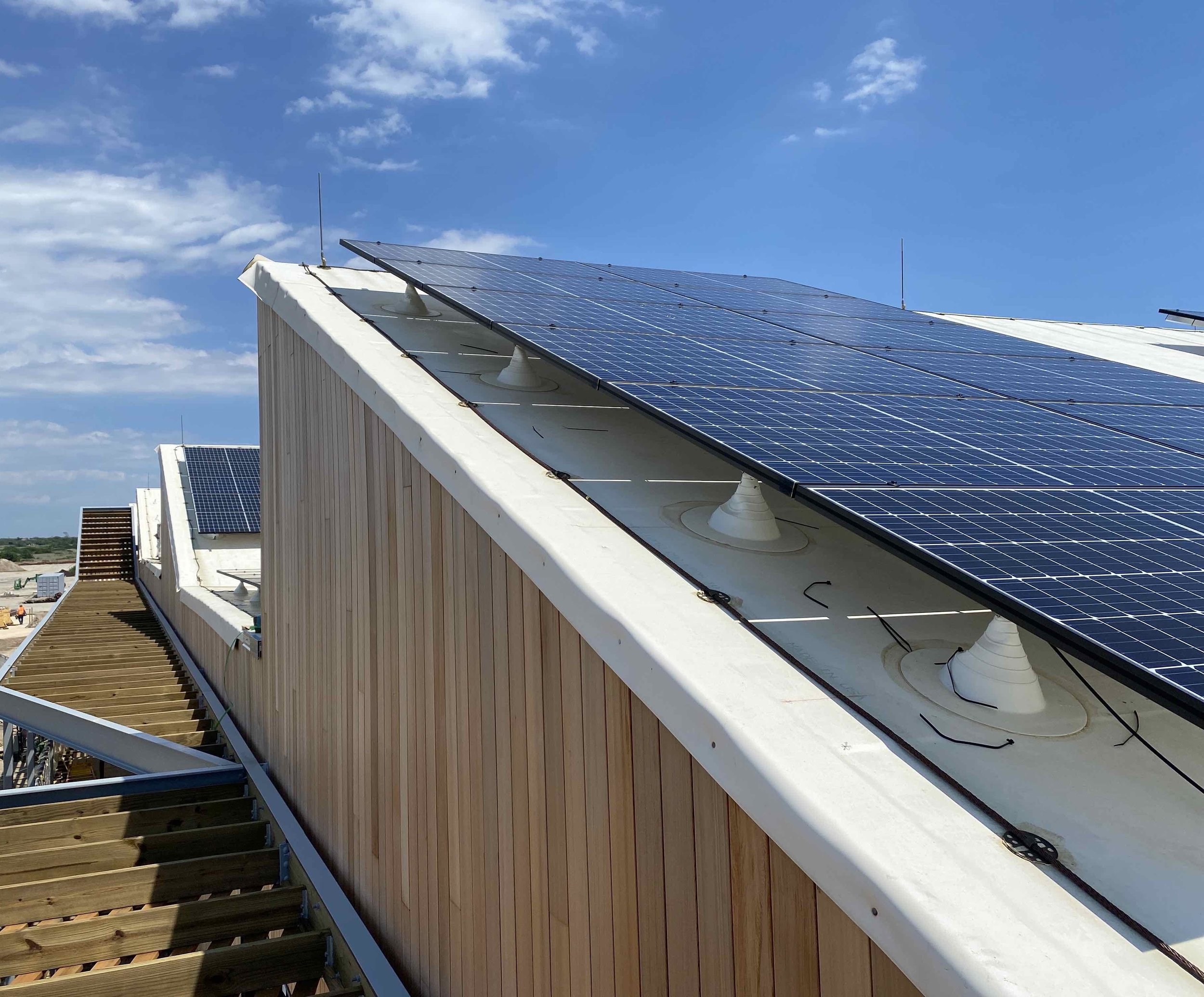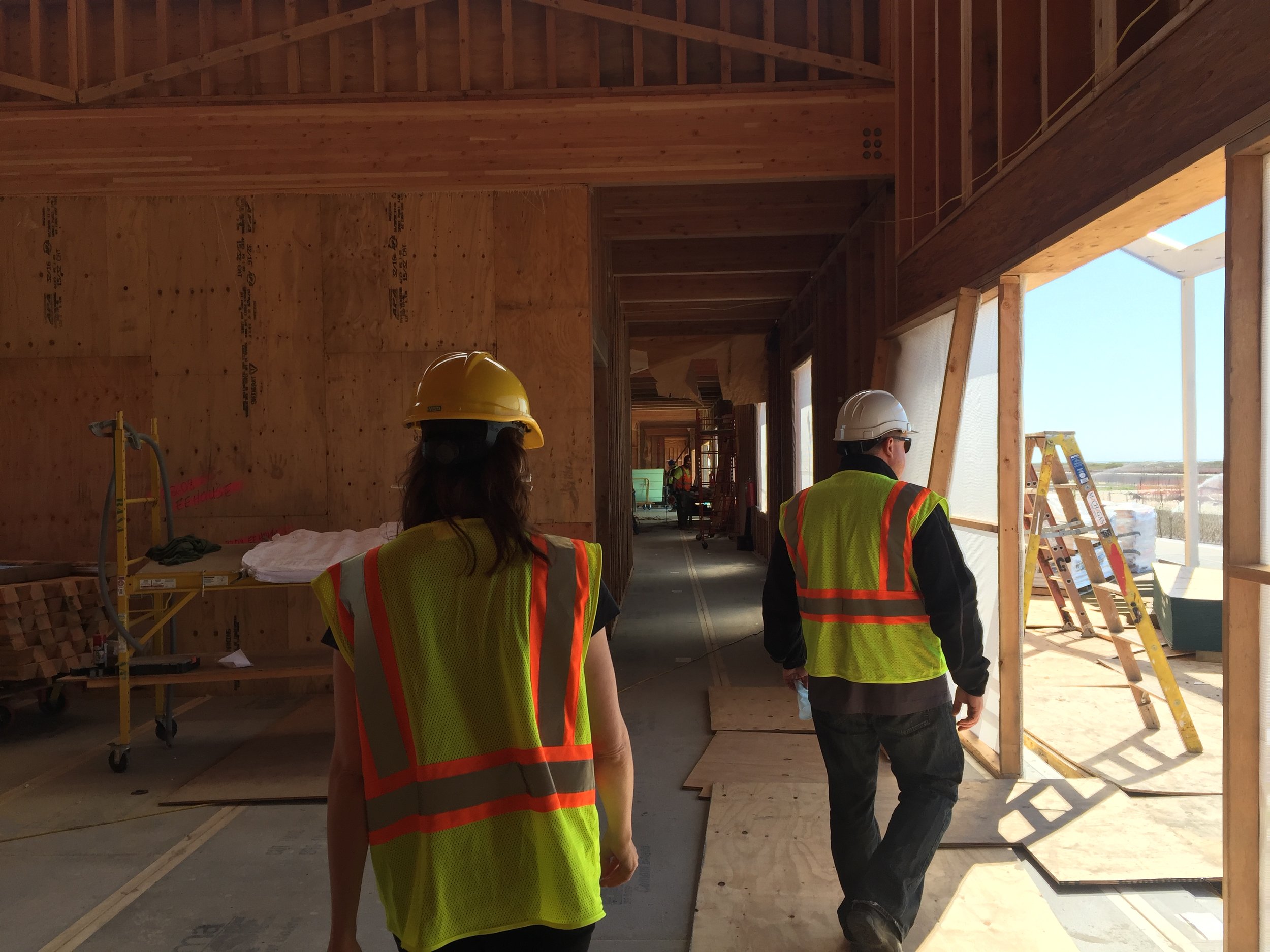SUSTAINABILITY

Rising seas, eroding coastlines, and strengthening storms all affect communities on Long Island. At the same time, the coastal landscape can inspire a more positive and less destructive future.
In the era of climate change, the same engineering and ingenuity that gave Jones Beach its white sands and coastline can also build a more balanced relationship between human beings and the natural environment.
The Center models many strategies that can be used to reduce a building’s climate footprint, and to increase the climate resiliency of buildings and landscapes.
Net-zero
building design
The Center was designed by nArchitects according to net-zero principles, meaning that it can produce as much energy as it consumes.
Energy-efficient and recycled materials lower the building’s overall energy consumption, while its energy needs are supplied by on-site renewable energy generation.
Meanwhile, other design elements, including landscape design by Starr Whitehouse, allow the Center to adapt to future effects of climate change.

Renewable energy at the Center
The primary way that a building can reduce its climate emissions footprint is by limiting the amount of nonrenewable energy used to provide light and heat.
Here, 260 roof-top solar panels and a geothermal heat pump produce renewable energy to run the Center.
A large battery stores extra electricity produced by the solar panels, providing power at night or during storms. Renewable energy produced on site is also fed to the Electrical Grid and distributed to surrounding communities.
Free Electric Vehicle charging stations encourage visitors to reduce their individual consumption of fossil fuels.

Energy-efficient and sustainable architecture
Embodied energy refers to the lifetime energy use of a material or structure—including the energy used to produce, transport, install, and dispose of materials.
The Center’s embodied energy was reduced through the use of sustainable building materials like red cedar.
Large windows reduce the amount of electricity needed for lighting, and thick glass helps keep the temperature inside stable.
Concrete from the old parking lot was recycled to build the topography of the surrounding landscape.

Resilient landscape and building design
Climate change alters weather patterns, raises sea levels, and disrupts the health of ecosystems. Building and landscape design can help people and nonhuman species adapt to these changing conditions.
At the Center, a 6,000-square-foot landscape of native plants filters stormwater and encourages the resiliency of local pollinator populations.
Breakaway walls and an elevated foundation protect the building against storm surge.
The battery provides back-up power in the event of a storm or other service disruption.

